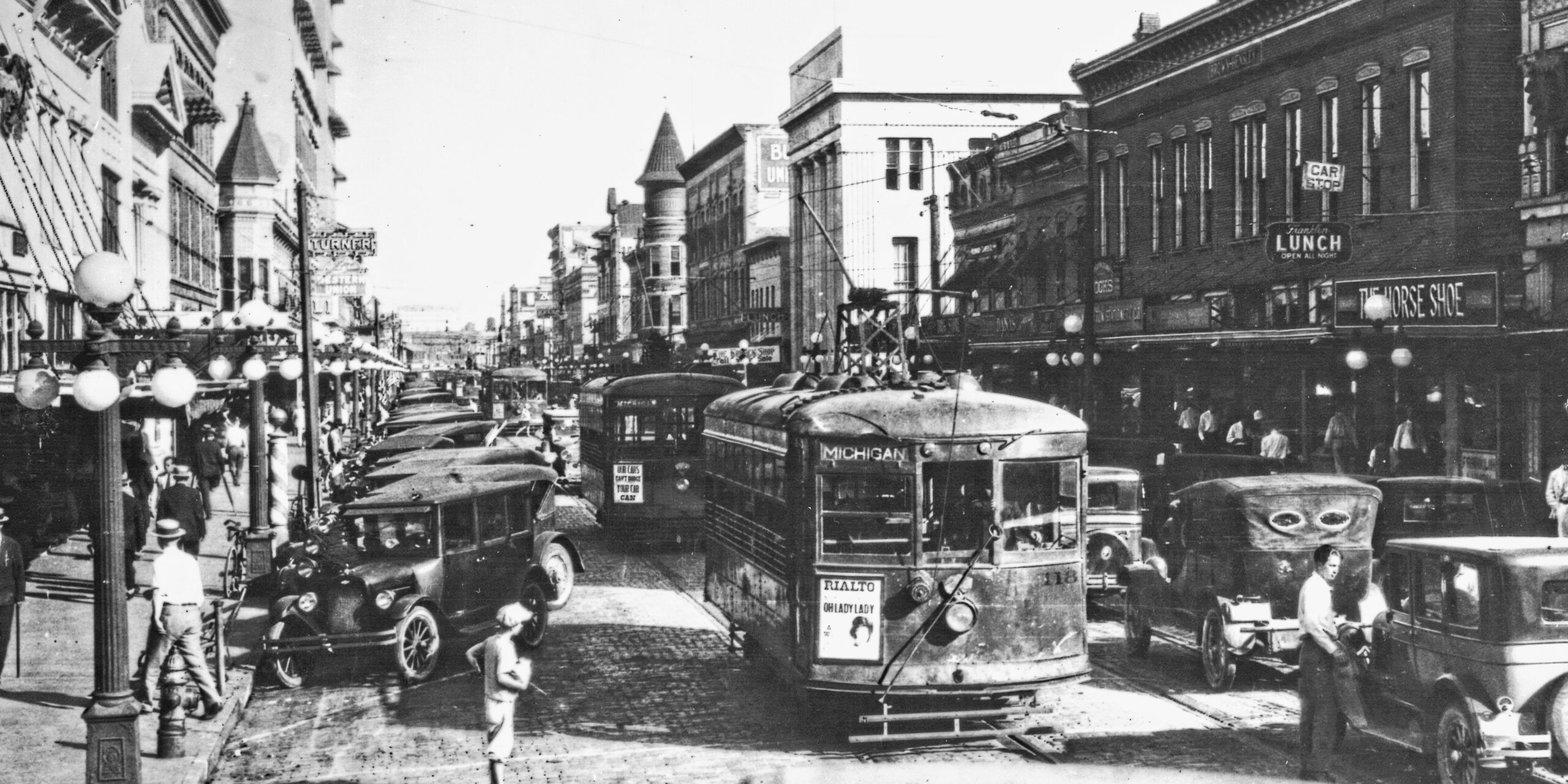From the late 1880s to the mid-1940s, streetcars in Tampa and St. Petersburg carried tens of thousands of people to destinations across both cities. People from all walks of life used the streetcar systems, including children going to and from school for a half-price fair. The systems were segregated during this time, a facet of the Jim Crow era that brought extra pain and aggravation when cars reached the end of the line, when the front became the back, and people of both races had to change seats. Despite this, the streetcars were a vital link in both cities’ transportation systems.
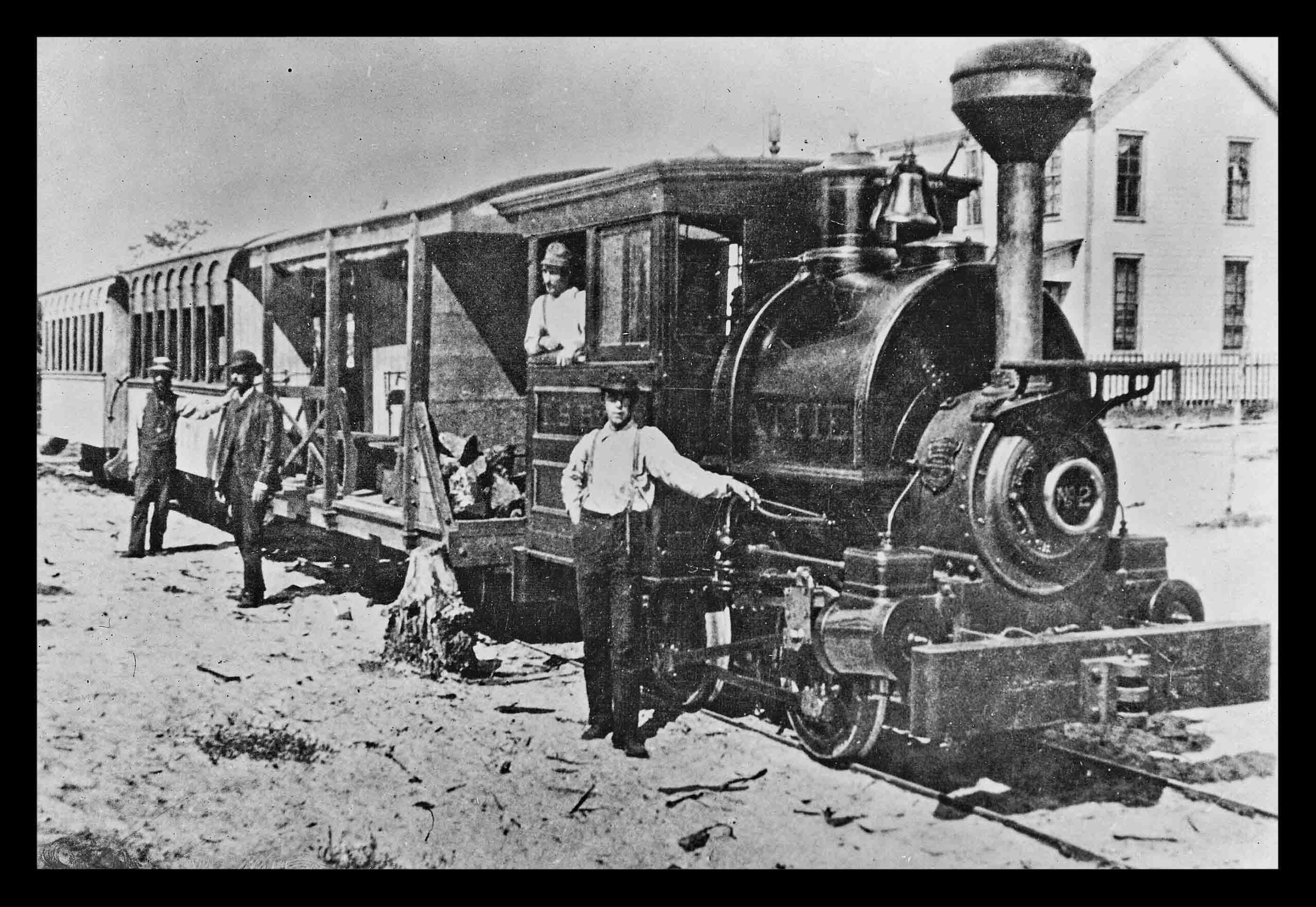
Tampa | First Streetcar
Tampa gets credit for having the first streetcar system in the Tampa Bay area. Connecting what was then the Town of Tampa (today’s downtown) to the newly-created Ybor City in 1886, that early streetcar was actually a smaller-scale steam-powered train that pulled several passenger cars. Competition and innovation both arrived in 1892 when additional companies began offering streetcar service using electric-powered streetcars.
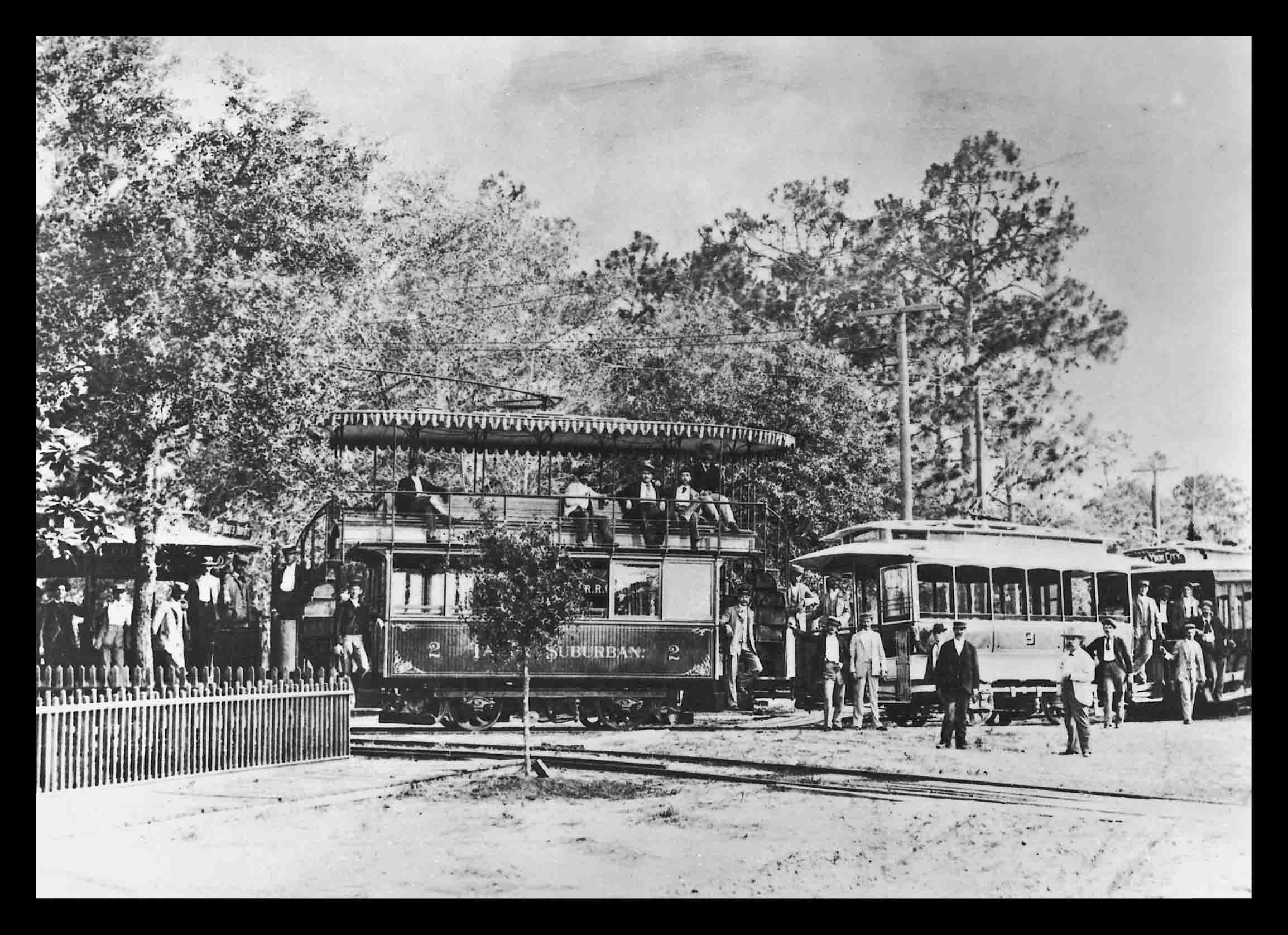
Tampa | Suburban Rail Road
In an era before automobiles, the streetcar system served a variety of transportation needs. While commuting to and from work, school or personal errands were the most common trips, the streetcars were also used for recreation and tourism. The streetcar featured in this photograph was a double-decker car with an observation platform on the second level. The groups pictured here are enjoying a day out at Ballast Point.
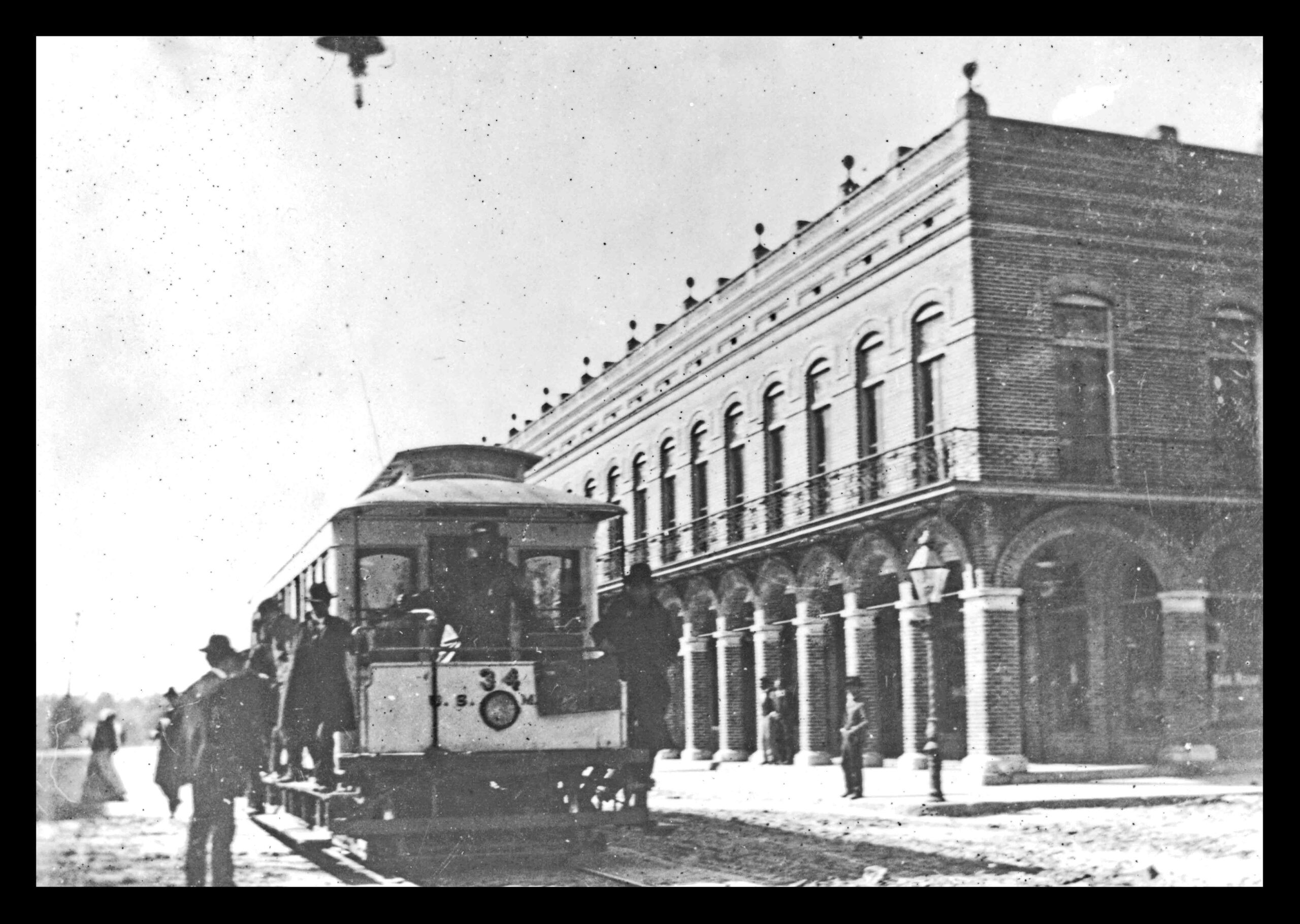
Tampa | Ybor City
Tampa’s streetcar system was used by the city’s cigar workers to travel between their homes and the city’s cigar factories, as well as to more social locations. This streetcar is stopped near the El Pasaje Hotel on Ninth Avenue and 14th Street in Ybor City. Notice that the streets are still unpaved, which dates this photograph to the late 1890s or early 1900s.
St. Pete | Central Avenue around Third Street
St. Petersburg’s streetcar line did not get started until 1905, and its creation was not a foregone conclusion. That early line ran along Central Avenue from the waterfront (where the power plant was located) to the corner of Ninth Street and Eleventh Avenue South. The Birney-style car pictured here is seen running east toward Tampa Bay on Central, approaching the Detroit Hotel (building with the tower). The hotel was named in honor of John Williams, one of St. Pete’s founders.
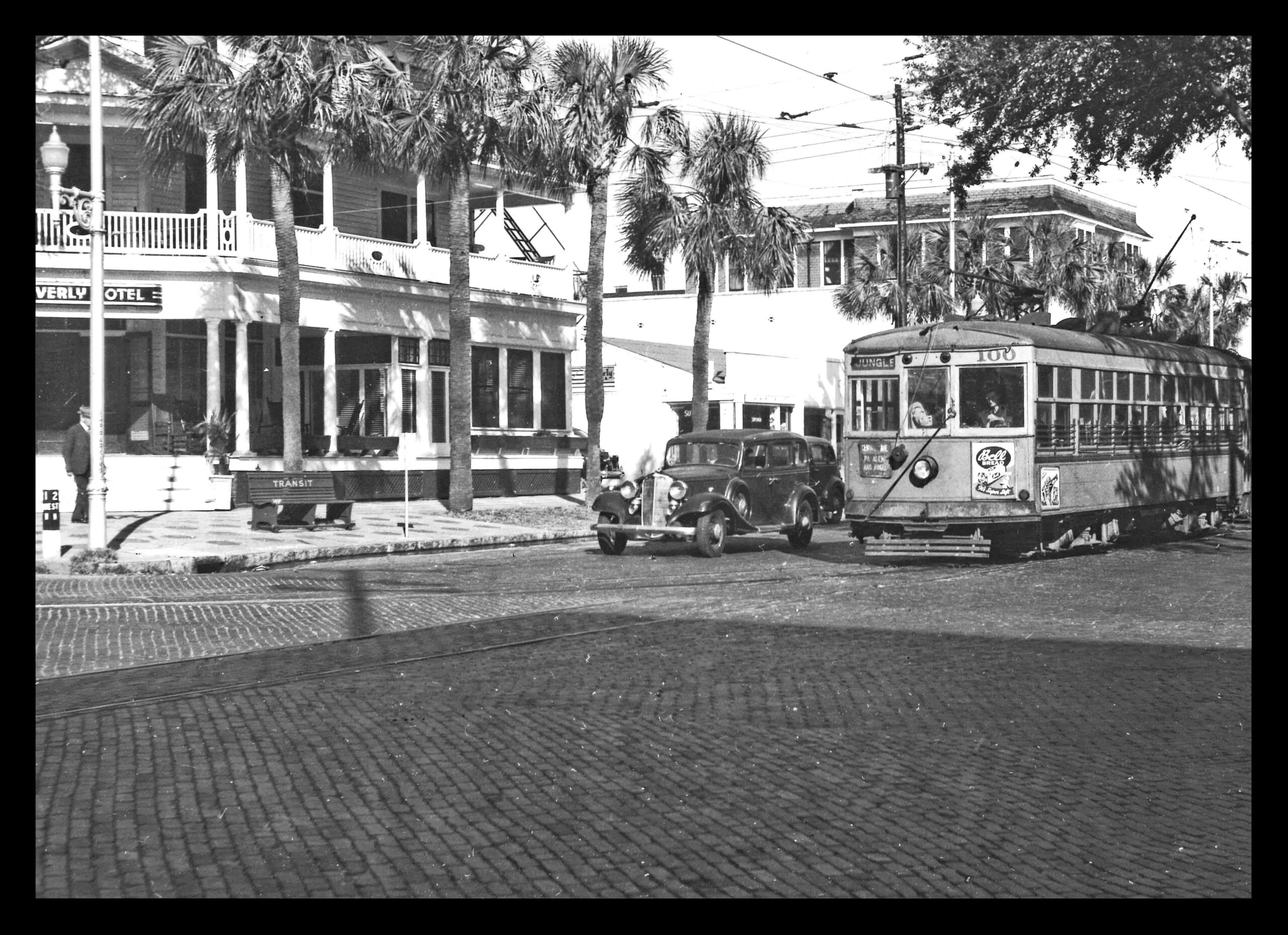
St. Pete | First Avenue North and Second Street North
While not as extensive as Tampa’s system, streetcars in St. Petersburg covered a lot of ground and served locals and tourists alike. Because the city hosted so many out-of-town guests, it had numerous hotels and boarding houses in the downtown area. Despite its grand name, the Beverly Hotel was really a boarding house located on the corner of First Avenue North and Second Street North.
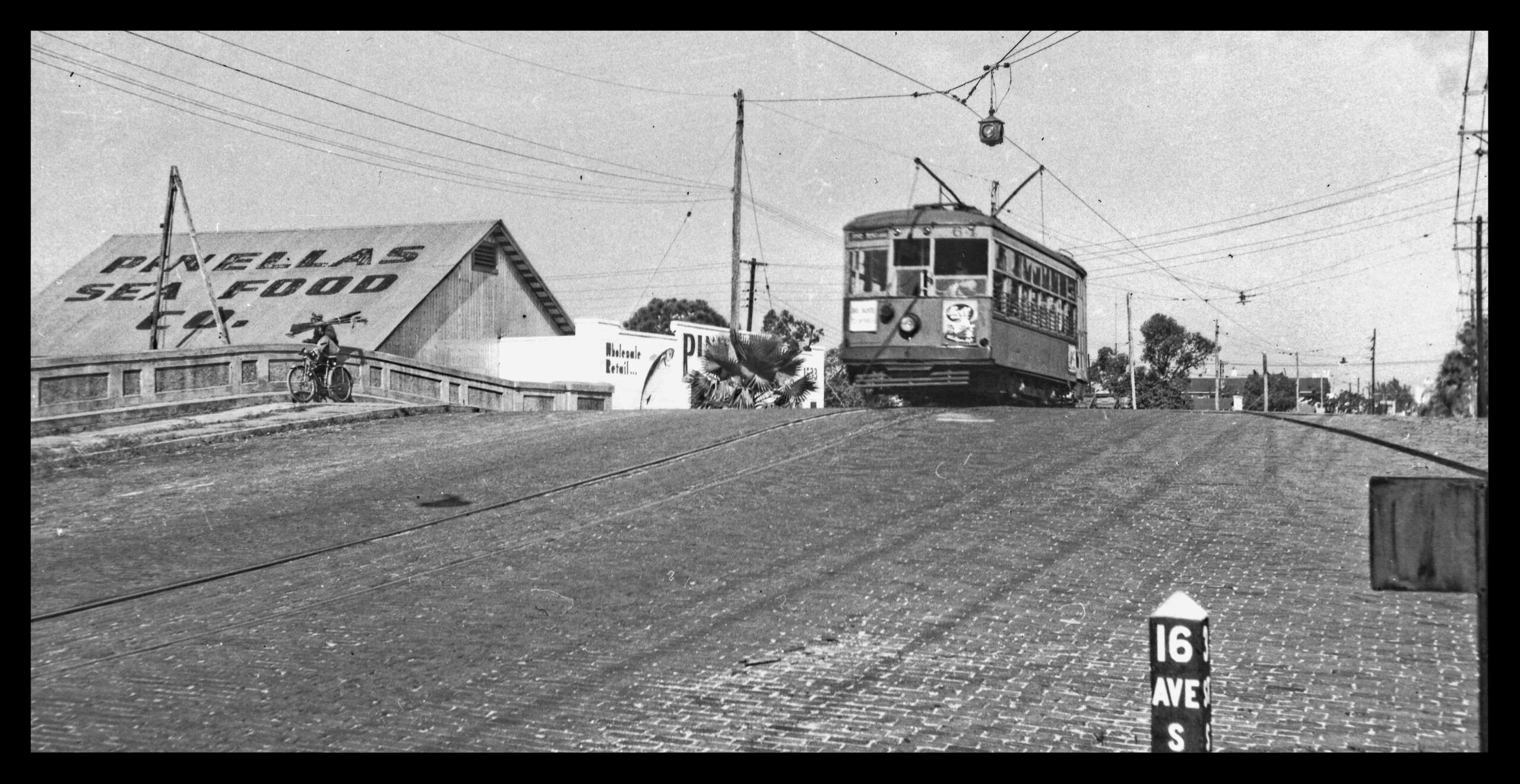
St. Pete | Bridge at Third Avenue South
Given the amount of creeks and bayous in St. Petersburg, streetcars needed to cross several bridges during their trek around town. This car, headed south on Third Avenue South, is shown crossing the bridge over Salt Creek near Big Bayou, which was the southern end of the line for this particular car. This line traveled through South St. Pete, a historically Black section of the city, providing residents of that neighborhood access to jobs in other parts of the city.
Tampa | Franklin Street at Madision (featured photo)
Downtown Tampa is absolutely bustling in this mid-1920s photograph of Franklin Street. Cars, pedestrians and streetcars all vie for space on the dense street. Notice the two streetcars operating together. This was called a double header, which is the origin of the term for two baseball games being played on the same day.
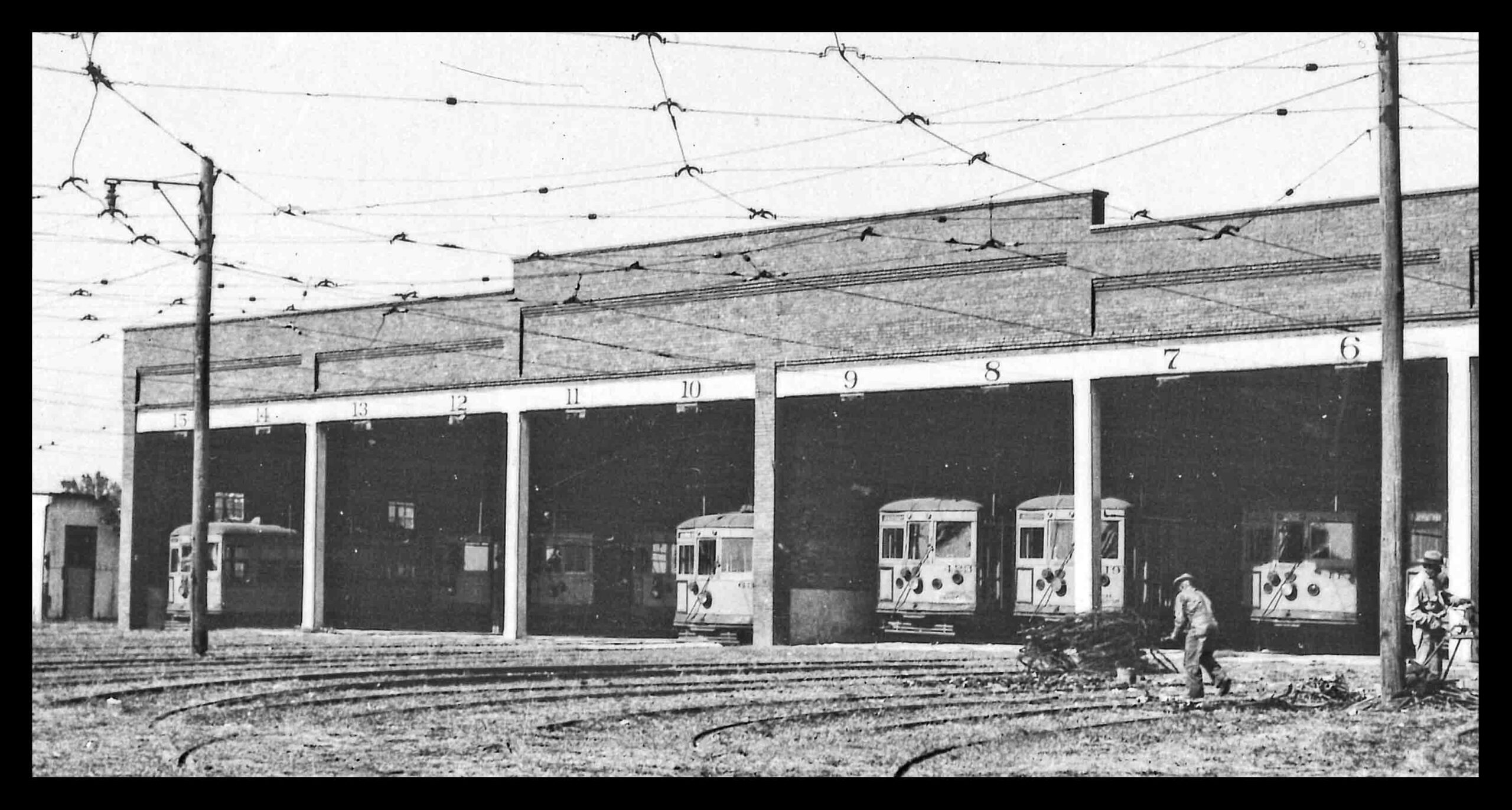
Tampa | TECO Streetcar Barn
Tampa Electric Company became the sole provider of electric and streetcar service for the city of Tampa in 1899. By the early 1900s, the streetcar system had dozens of cars and covered most of the city – from Tampa Heights to Ybor to Downtown and all the way south to Ballast Point and Ybor City. It also connected with West Tampa and, eventually, Seminole Heights. The car barn, shown here, was used to store and repair all of TECO’s streetcars. It is now home to Tampa Armature Works.
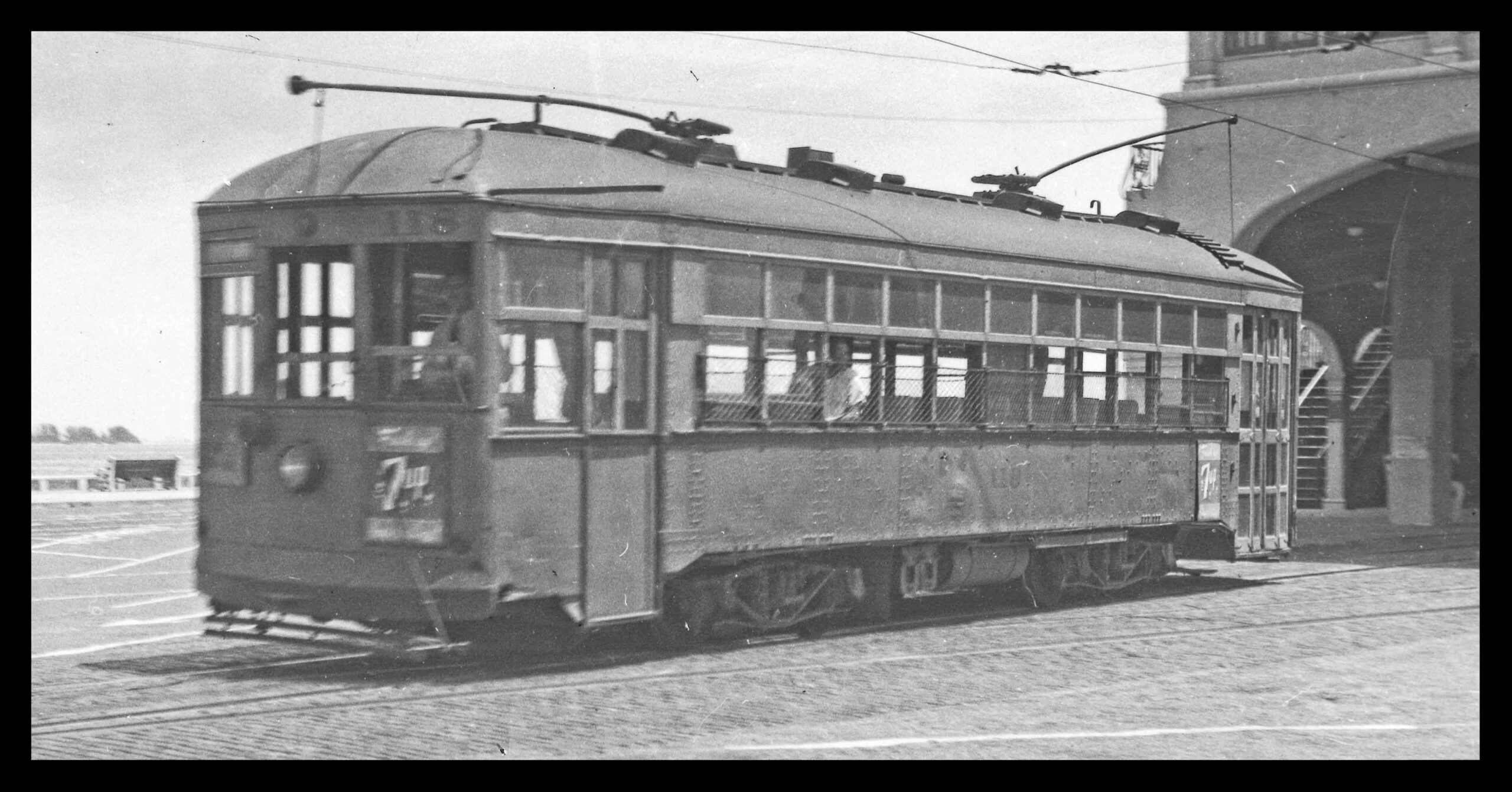
St. Pete | Million Dollar Pier
The City of St. Petersburg constructed the Million Dollar Pier in 1926 as a focal point for the city’s tourism industry. As such, it needed to be connected to the city’s streetcar system. Tracks carried passengers down the length of the pier and literally into the building at the end. The pier offered fishing and the Mediterranean-Revival-style structure at the end hosted concession stands and small restaurants, plus a souvenir shop.
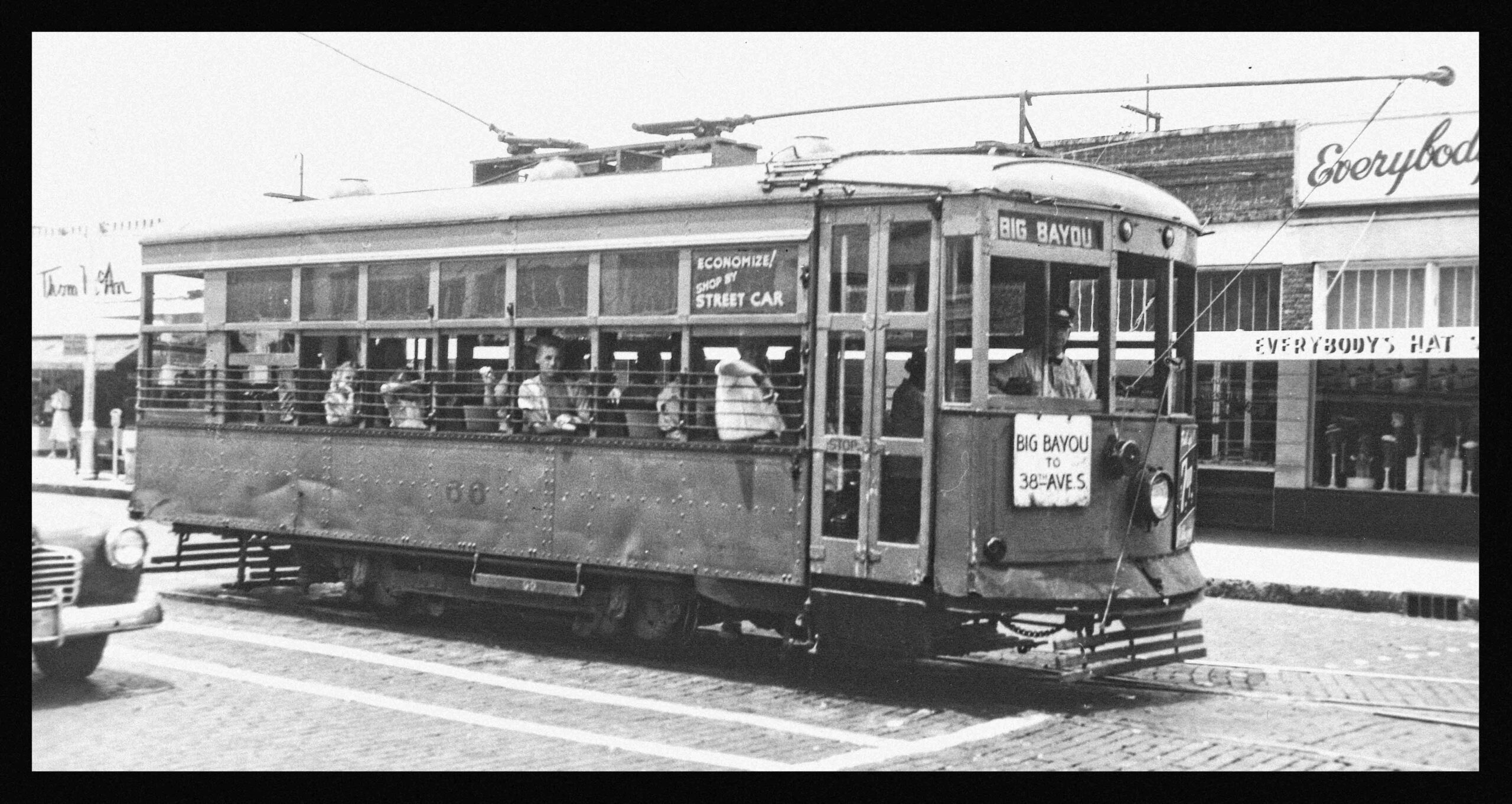
St. Pete | 701 Central
This car, running along the tracks in front of the Everybody’s Hat Shop at 701 Central Ave., was likely headed to Third Street then south to Big Bayou. The Thom McAn shoe store is seen to the left of the streetcar, and the sign on the car reminds residents to “Economize! Shop by Steet Car.” The downtown business district was likely not in danger when this photo was taken in the 1930s, but by the 1950s the streetcars would be gone and suburban malls and shopping centers began to dominate.
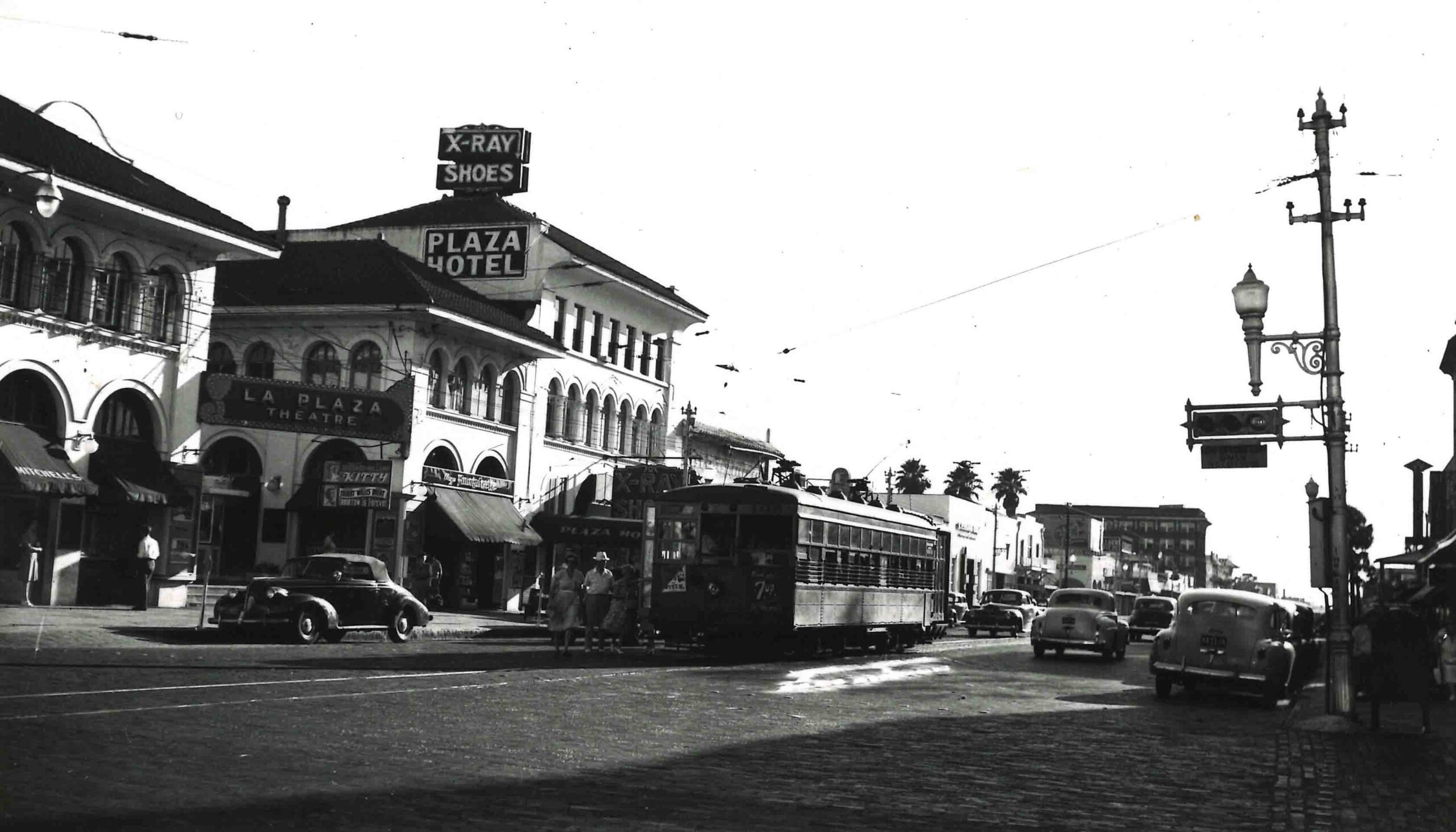
St. Pete | Central Avenue at Fifth Street
The southwest corner of Central Avenue and Fifth Street is shown in this 1930s view of St. Petersburg. Streetcars were still important, but automobiles were gaining in popularity. The Plaza Hotel and adjacent La Plaza Theatre were both landmarks in the city. The theater was built in 1913 by George S. Gandy, who eleven years later saw the opening of his namesake bridge.
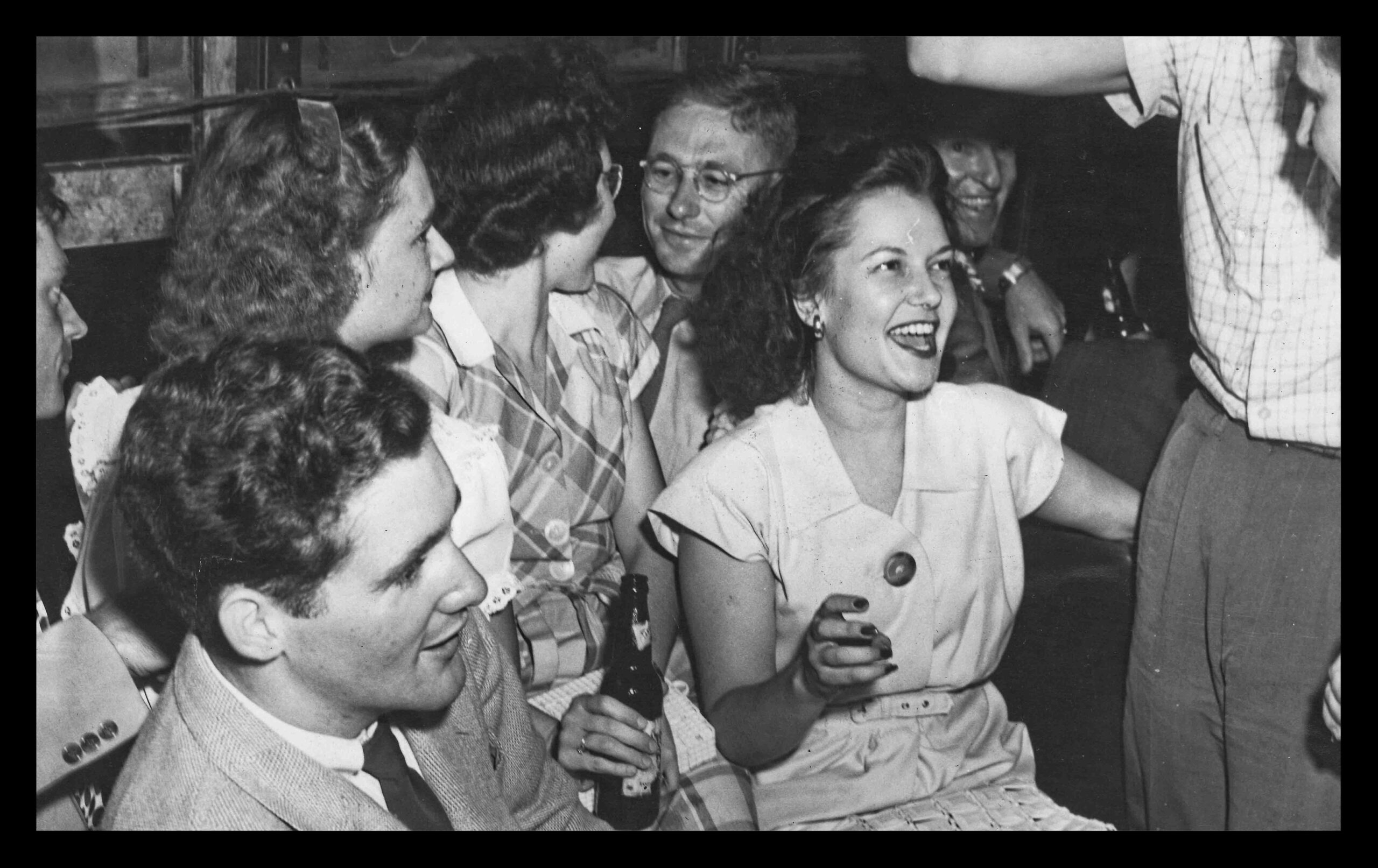
Tampa | Last Streetcar Ride
Following the end of World War II, cities across the United States began to replace their electric and rail streetcars systems with gas-powered buses. Tampa and St. Petersburg were no exception, with St. Pete’s line mostly ceasing operations in January 1948 (the Gulfport and Jungle lines continued until May 7, 1949. Tampa’s streetcars reached the literal end of the line on August 8, 1946. Members of the “Tampa Daily Times” staff are shown here taking one last ride.
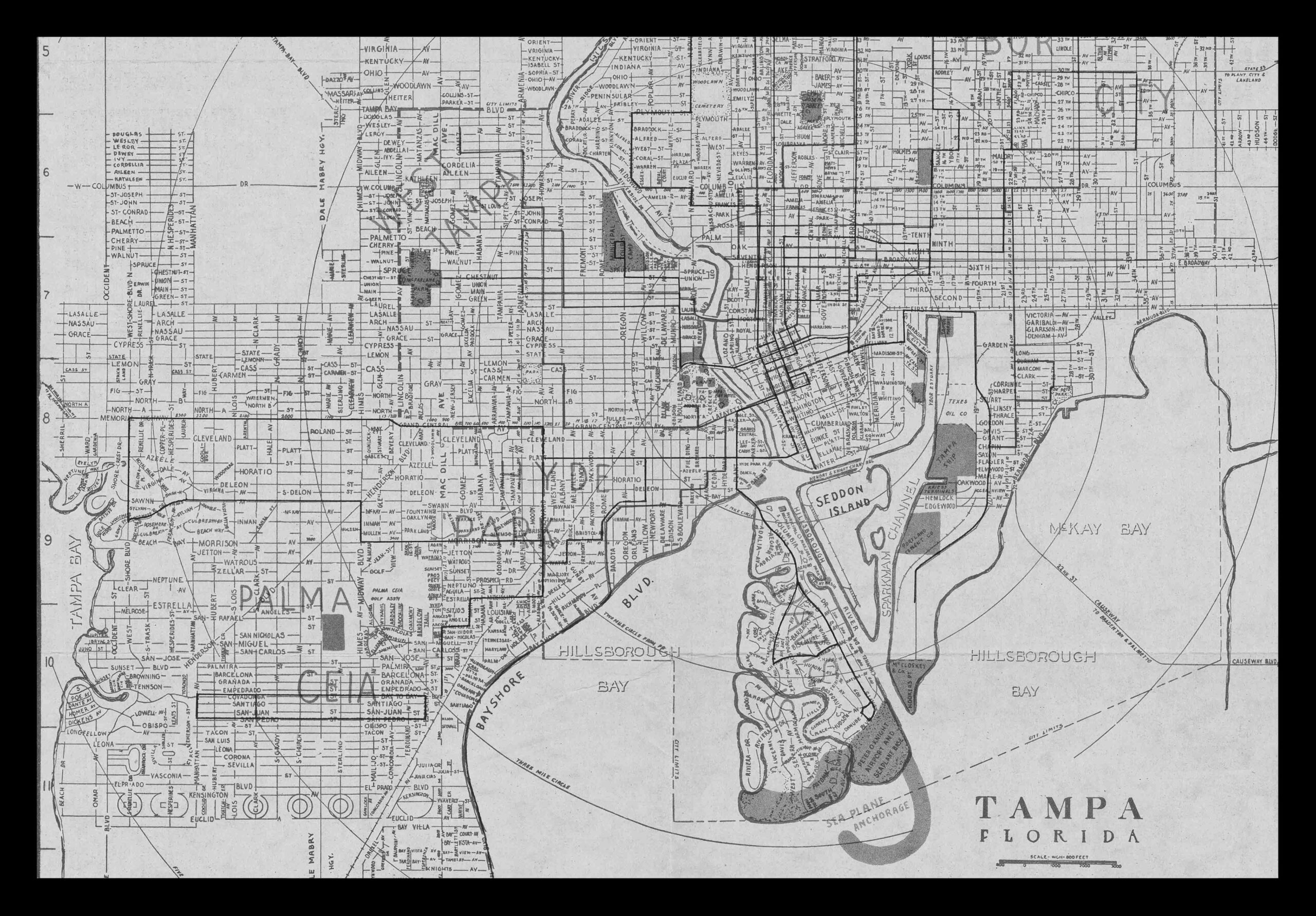
Tampa | TECO Streetcar Map
TECO’s streetcar system was very extensive and by the 1940s, passengers could travel from Sulphur Springs and Seminole Heights all the way down Bayshore Boulevard to Ballast Point and Port Tampa City; from Ybor City’s eastern edge across the bridge throughout Hyde Park and West Tampa.
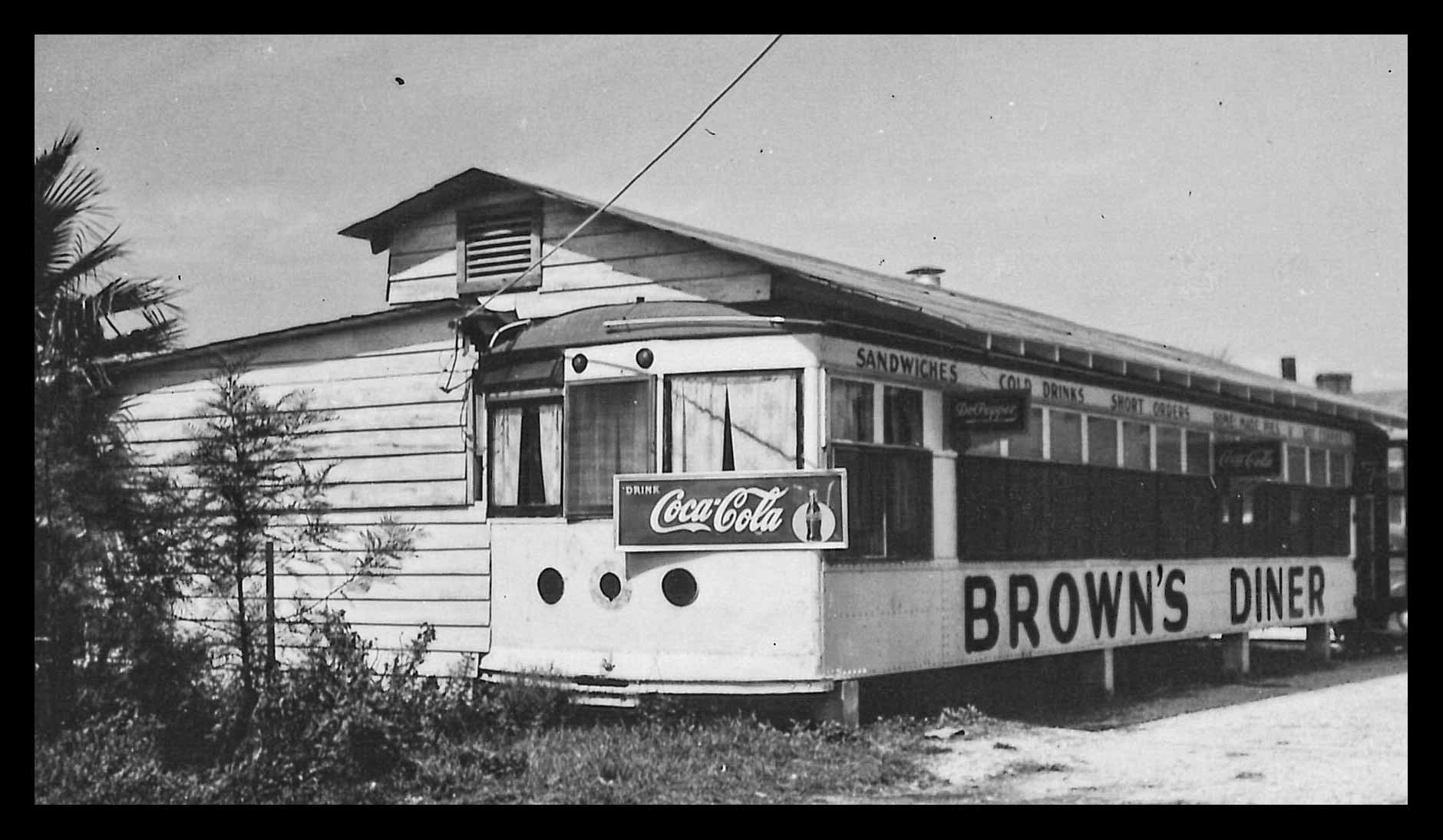
Tampa Bay area | Repurposed Streetcar
When the streetcar line was discontinued, Tampa Electric found a wide variety of buyers for their surplus cars. Many were sent to Central and South American cities for use on their streetcar lines, but others remained in the area and found new purposes, from garden sheds to home additions to businesses, like this one that became part of Brown’s Diner.
Rodney Kite-Powell is a Tampa-born author, the official historian of Hillsborough County and the director of the Touchton Map Library at the Tampa Bay History Center, where he has worked since 1995.


